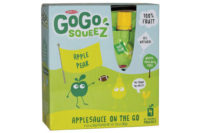Cosmeceuticals Find a Niche






As the name suggests, cosmeceutical products are a marriage of cosmetics and pharmaceuticals. They are topically applied, injected or ingested, and the majority of them contain ingredients that purportedly improve one’s appearance by delivering nutrients necessary for healthy skin. Currently, cosmeceuticals are not subject to approval by the U.S. Food and Drug Administration, nor is testing mandatory in order to buttress or disprove a product’s claim.
Most manufacturers market their products based on the theorized beautifying properties of their active ingredients. These include antioxidants, which reduce the skin-damaging effects of free radicals; peptides, which stimulate the production of collagen, the main structural component of the skin; and growth factors, chemical messengers that function in cell division and the distribution of collagen. According to the Freedonia study, antioxidants will remain the largest cosmeceuticals category, while botanicals will see the fastest gains in demand, with consumers favoring “natural” products.
As of 2006, more than 60 botanicals were marketed in cosmeceutical formations, with teas, soy, date, grape seed, pomegranate, curcumin, comfrey and aloe—among others—being documented as treating dermatologic conditions, according to an article in Dermatologic Surgery. Only green and black tea, soy, pomegranate and date have published clinical trials related to the treatment of aging.
The majority of cosmeceuticals are applied topically and are claimed to have effects on the skin’s appearance. However, ingestible cosmeceuticals and “functional foods” occupy a growing share of the market. A 2008 Kline Group study estimated the nutricosmetics market to be worth $1.5 billion, with Europe and Japan being primary consumers. Most oral cosmeceuticals take the form of supplements claiming to affect one’s appearance from the inside out. Omega-3, omega-6, silicon and vitamin E supplements, for example, all claim to regulate skin deterioration and bolster collagen production.
The American nutricosmetics market is still in its infancy, accounting for an estimated 3% of the global market, according to the Kline Group. American consumers, according to the study, are more skeptical of “beauty-from-within” products, as well as products that lack scientific validation or fail to show instant results. The key players in the American nutricosmetics industry include Perricone MD, Murad and Borba. Perricone and Murad have both introduced topical skin care treatments, as well as supplemental pills, while Borba sells a line of supplemental waters and water-soluble crystal packets containing a “revolutionary cultivated bio-vitamin complex.”
In Europe, Nestlé and L’Oréal have partnered to develop a line of nutricosmetic products. In 2009, the companies released Inneov Fermete, a small, red, sugar-coated pill which, in test groups of postmenopausal women, was shown to improve skin elasticity by 8.7%. Inneov Fermete’s primary active ingredient is lycopene, an antioxidant pigment found in tomatoes and certain other red vegetables and fruits. Inneov currently markets 13 products designed to treat specific cosmetic problems, including hair loss, dandruff and cellulite.
Like Europe, Japan has a firmly established nutricosmetics market. Japanese products are wide-ranging and frequently updated, as well as less expensive than their European or American counterparts, selling for approximately 100-300 yen (3-4 dollars). Shiseido cosmetics, along with Lion and Kracie, dominate the Japanese market. Japanese nutricosmetics are unique in that many of them function as foods, rather than mere supplements. Nippon Luna’s “Belly Reducing Midnight Yogurt,” for example, contains 750mg of collagen and aids in “good sleep and beauty support.” Cranes Child sells boxes of individually wrapped collagen marshmallows containing 4,500mg of collagen per piece. Fuwarinka, literally “fragrance from within,” are rose- or lemon-flavored candies claiming to alter the consumer’s body chemistry, so as to emit a pleasant aroma.
Nutricosmetic ingredients to watch for include collagen, for its skin-strengthening properties; coffee bean (caffeine can act as a metabolic stimulant and slimming agent); turmeric, which functions as a photo-protectant and antioxidant; and grapes, which also serve as antioxidants and detoxifying agents. The Kline Group projects the nutricosmetics market to reach $2.5 billion by 2012, but it will likely remain a niche subset of the cosmeceuticals industry, at least in America. Avon and Olay have already abandoned nutricosmetics after minimal success in the past. However, with the Baby Boomer generation aging, and more Americans subscribing to a culture of youth, for the time being cosmeceuticals are here to stay.
Antioxidant Considerations
Most consumers seem to take it for granted that food and beverages containing antioxidants are a shortcut to healthy living, cancer prevention and beauty—a wonder-molecule of sorts. The Nielsen Company reported U.S. sales of food and drinks containing an antioxidant claim topped $2 billion for the year ending November 28, 2009, up from $889 million for 2005. The volume of sales for antioxidant supplements grew 10% in the same period. In 2009, Vitamin Water reaped $500 million in sales, marketing drinks like “XXX,” a triple blend of acai, pomegranate and blueberry extracts containing a mega-dose of antioxidants. But, is a triple dose of antioxidants any better than none at all?
The science behind antioxidants’ purportedly life-changing powers relates—as the name implies—to their ability to delay or reduce oxidative processes. The risk of many diseases, including heart disease, cancer and neurodegenerative disorders is thought to increase due to damage from free radicals. Free radicals stabilize themselves by oxidizing other molecules—fats, protein, DNA—and creating more radicals in the process. Chemical antioxidants generally stabilize radical molecules by donating an electron, thereby rendering them inactive.
It does not require a cosmic leap of logic to see where this is going. More antioxidants in the diet = fewer free radicals in the body = fewer diseases. But, what if there is a problem with this theory? What if more antioxidants in the diet ≠ fewer radicals in the body? Scientific data on the efficacy of antioxidant-rich diets are inconclusive at best.
In 2007, for example, the Journal of the American Medical Association reported on a scientific trial in which the ingestion of antioxidant supplements (b-carotene, vitamin A and vitamin E) actually increased mortality in human subjects. It may be that antioxidants occurring naturally in fruits and vegetables are easily assimilated into the body, while supplements and nutraceuticals are less so. Ironically, in too high a dosage, certain antioxidants can generate harmful levels of free radicals.
Consumer confidence in antioxidants remains high, however. Some 78% of consumers used antioxidants in some form in 2008, with 22% saying they increased their use that year, according to a HealthFocus study. The same study found “a good source of antioxidants” to be an “extremely/very important” claim for 47% of consumers. Antioxidant-rich foods have spiked in sales, with purchases of acai berry ballooning 900% between 2007-2009, according to SPINS, a San Francisco-based analyst group for the natural products industry.
As antioxidants have risen in popularity, so too have the FDA’s efforts to control the industry. As of June 2011, the FDA’s guide for food labeling and nutrient claims only allows antioxidant nutrient content claims for certain nutrients that have recognized antioxidant activities, meaning, “after it is eaten and absorbed from the gastrointestinal tract, the substance participates in physiological, biochemical or cellular processes that inactivate free radicals.” Also, the antioxidant must have an established RDI; the one exception is beta-carotene, which is a precursor for vitamin A, and the claim is related to the level of that vitamin. That is, in order to make a specific nutrient content claim, the amount of antioxidant nutrients in a single serving must supply a certain percent of its recommended daily intake for that antioxidant. For example, a “good source” of antioxidants claim would have 10-19% RDI of that nutrient per serving. (See http://tinyurl.com/6jwcdav and scroll down to antioxidants.)
Last August, the FDA issued warnings to Dr Pepper Snapple Group for making claims of enhancing its Canada Dry ginger ale with “200mg of antioxidants from green tea and vitamin C.” The FDA did not recognize the product as containing any antioxidant nutrients. A few months earlier, the FDA found POM Wonderful, a brand of pomegranate juice, in “serious violation” of the Federal Food, Drug & Cosmetic Act. On its Web site, POM made multiple claims regarding the health benefits of its products, such as delaying atherosclerosis and slowing the growth of prostate tumors. The FDA not only labeled POM’s claims as unsubstantiated; they also found it to be altogether misbranded as “uniquely high” in antioxidant nutrients.
It is understandable why companies are quick to tout the real or not-so-real antioxidant activities of their products. They are quick and easy ways to associate products with the healthy lifestyle trend so important to consumers. It is also a risky business, as the FDA can quickly pull the plug on a misbranded product and cost a company thousands of dollars in advertising and reputation management. With the antioxidant supplements sales generating $27 billion per year, however, companies are in no danger of facing a customer shortage. pf
Looking for a reprint of this article?
From high-res PDFs to custom plaques, order your copy today!







